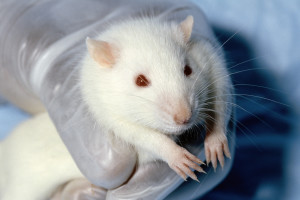In a development that will go down in history, scientists at Massachusetts General Hospital in Boston have grown a rat forelimb in the lab from living cells. This incredible achievement will hopefully mark the first step in producing biological replacement limbs for amputees.
Simple organs have already been created using the ‘decel/recel’ technique behind the rat forelimb – such as hearts, lungs and kidneys.
However, this is the first successful attempt at producing an entire limb, and the procedure is particularly promising. Harald Ott of Massachusetts General Hospital in Boston, leader of the team who grew the limb, explained that “the techniques would apply equally to legs, arms and other extremities.”
The technique’s name is derived from the two main steps involved in the production of the organ. In the first, decal (or decellularisation) step, organs are removed from deceased donors and treated to strip all the soft tissue, leaving a ‘scaffold’ of mostly collagen.
Next, flesh is grown to fill the scaffold by seeding it with appropriate cells from the recipient. This mix of scaffold and cells is incubated in a bioreactor, encouraging new tissue to grow.
As a forelimb is composed of many different cell types, it is far more difficult to create in this manner.
Currently, the only options available to amputees are poorly-functioning artificial replacements or bionic replacement limbs which function well but are unnatural. Transplants have been used for hands with varying success, but require the use of immunosuppressive drugs to prevent rejection for the remainder of life. Biolimbs are created from the recipients cells, so would not expected to be rejected.
Promisingly, primate forelimbs have already been decellularised with success by the team. The scaffolds are beginning to be recolonized with human cells, but there is considerable wok to be done until such limbs are ready for human testing. Ott predicts the first experiments will not take place for at least a decade.
However, some are sceptical. Oskar Aszmann of the Medical University of Vienna, and inventor of a bionic hand that can be controlled by thoughts, believes that a fully functioning human biolimb is unfeasible.
“The hand must be innervated by thousands of nerves to have meaningful function, and that is at this point an insurmountable problem. So although this is a worthy endeavour, it must at this stage remain in the academic arena, not as a clinical scenario.”
![A World First: Rat Forelimb Grown Entirely in Petri Dish In a development that will go down in history, scientists at Massachusetts General Hospital in Boston have grown a rat forelimb in the lab from […]](/wp-content/uploads/2012/12/News-image-01-300x1691.jpg)
